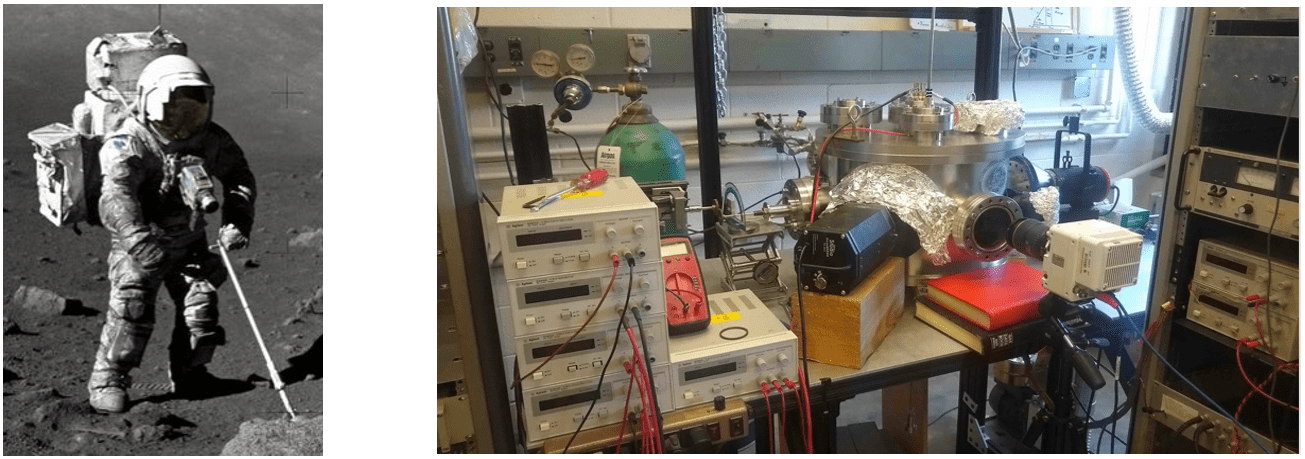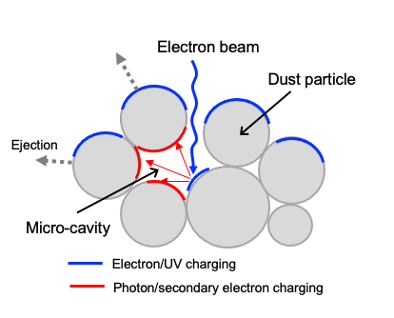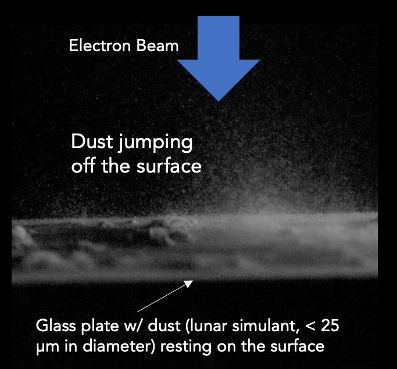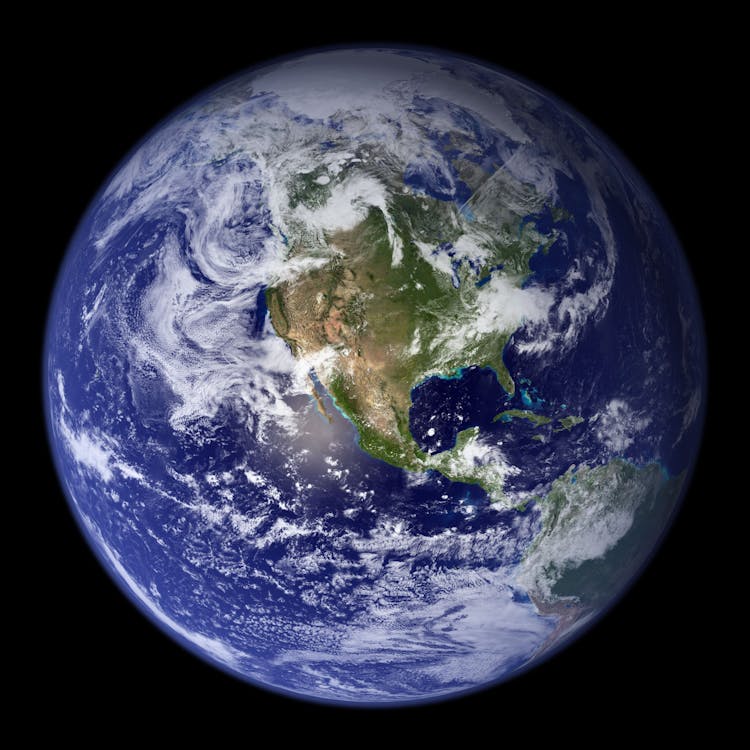PROJECT
Lunar Dust Research and Mitigation
SNAPSHOT
To help protect future space assets and astronauts from dangerous effects that arise from Moon/Mars dust exposure, NASA is developing a new technology that will utilize electron beams/ultraviolet light to remove dust.
The Apollo missions faced a high risk of dust-related damage to space hardware and astronaut health. Fortunately, NASA researchers have recently determined that lunar dust can be zapped away using a beam of electrons. NASA is exploring use of non-contact, electrostatic, dust-charging technology to protect the Agency’s important space assets without restricting mission parameters.
The lunar surface is covered by a layer of dust particles called regolith. These dust particles can be stirred up during robotic and human exploration activities or released by natural processes such as meteorite impacts. Apollo astronauts noted that lunar dust particles readily stuck to surfaces such as spacesuits, optical lenses, and thermal blankets, causing numerous problems. Apollo mission spacesuits were damaged by abrasive lunar dust and several astronauts noted that moon dust was resistant to cleaning efforts; even vigorous brushing could not remove it.
NASA’s Artemis program will develop extensive resources on the Moon starting in 2024 and will require advanced technologies to enable a sustained lunar presence. Mitigation of lunar dust adhesion will be central to these efforts and to Artemis’s success. However, lunar dust exhibits several characteristics that make it difficult to remove. For example, unlike Earth, the Moon does not have an atmosphere and magnetic field to protect its surface from solar radiation. The solar wind can electrically charge dust particles on the Moon, causing the charged particles to stick to each other and to other surfaces. In addition, lunar dust particles are very jagged and rough, which also increases their “sticking power.”
A team at NASA/Jet Propulsion Laboratory (JPL) and Colorado University (CU), Boulder is developing new electron beam technology and a tool called a “Moon duster,” which can be used to remove dust on sensitive surfaces of hardware and spacesuits on the Moon. Unlike other technologies that require incorporating a complex design of active embedded layers on the surface to be cleaned, the Moon duster is a standalone, hand-held electron beam device that can be potentially used on any dust-covered space hardware on the Moon. “The Moon duster will be like a typical duster spray on your desk, but it operates without air,” imagined Dr. Inseob Hahn, a program technologist and the project lead at NASA/JPL.
This new electron-beam technology is based on insights gained from previous studies of the natural electrostatic dust lofting process that may occur spontaneously on the surface of airless bodies (e.g., the Moon and asteroids). The model developed to explain this dust lofting process is depicted below. When an electron beam or UV field is applied to a micro-cavity formed in a pile of dust, the induced secondary electrons or photoelectrons are collected by the surrounding dust particles, resulting in a substantial negative charge buildup on the dust particles’ surfaces. The repulsive force between these negatively charged dust particles ejects them off the surface.
To test the electron beam concept, the researchers at CU Boulder loaded a vacuum chamber with various materials coated with a NASA-manufactured “lunar simulant” designed to resemble Moon dust. After aiming an electron beam at the particles, the dust jumped off the material’s surface, usually in just a few minutes, as captured in the image below. The technique worked on a wide range of surfaces, including spacesuit fabric, glass, and solar panels. This new technology aims at cleaning the finest dust particles, which are difficult to remove using tools like a brush. The method removed an average of about 75-85% of the dust particles on the surfaces tested. The researchers are also experimenting with new ways to increase the cleaning efficiency of the electron beam. The research results are very encouraging, and now the team is developing a testbed at NASA/JPL to evaluate how the technology will perform in the very cold Moon environment. Other team members conducting this research include Benjamin Farr, who completed the work as an undergraduate student in physics at CU Boulder, and Drs. Mihály Horányi at CU Boulder, John Goree of the University of Iowa, and Ulf Israelsson at NASA/JPL.
PROJECT LEAD
Drs. Inseob Hahn (NASA/Jet Propulsion Laboratory, California Institute of Technology), Xu Wang (Colorado University, Boulder)
SPONSORING ORGANIZATION
Biological and Physical Science Division, Planetary Science Division, SSERVI/Institute for Modeling Plasma, Atmospheres and Cosmic Dust (IMPACT), Space Technology Mission Directorate




































